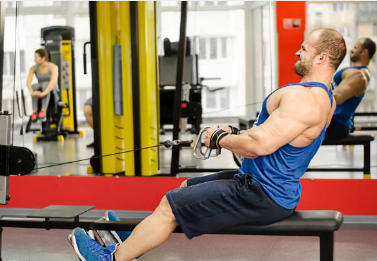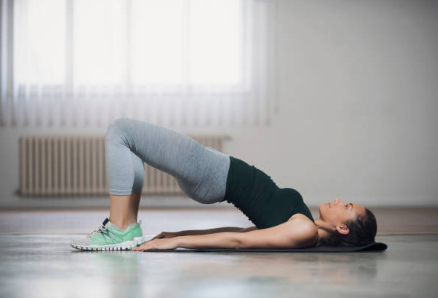If you’re looking to build a strong, muscular back without investing in bulky gym equipment, a sturdy pull-up bar is all you need. In this guide, you’ll discover how to use your own body weight to target every major back muscle—from lats and rhomboids to traps and spinal erectors. Whether you’re a beginner or experienced, the back workouts on pull up bar routines below are designed to maximize gains and bust plateaus.
Pull-up variations are the cornerstone of any home pull up bar back workout, offering endless options for progression. From classic pull-ups and chin‑ups to hang holds and advanced levers, each exercise adds functional strength and aesthetic definition—especially when you incorporate proper form and strategic programming.
Why the Pull-Up Bar Is So Effective for Your Back
Compound engagement: Pull-ups engage lats, traps, rhomboids, rear delts, biceps, and core muscles in one movement—an efficient way to build upper‑body strength
Scalable for all levels: Use band assistance, negatives, or weighted variations to match your strength level .
Anytime-anywhere training: A pull-up bar is compact, versatile, and ideal for spacing limited environments like apartments or garages.
Posture and stability: Hanging movements (e.g., scapular pull‑ups) help retract the scapula and build posture-supporting muscles .
Minimal joint stress: Bodyweight training on a pull-up bar is gentler on joints compared to heavy rows or machines.
Detailed Pull-Up Bar Back Exercises
1. Standard Pull-Up (Pronated Grip)
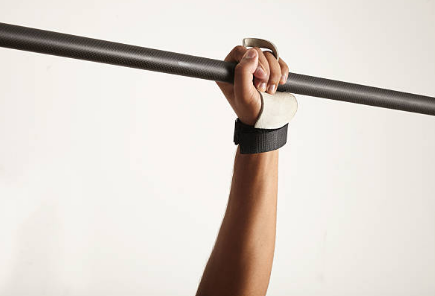
How to Perform:
- Grip the pull-up bar with your palms facing away from you (pronated grip), slightly wider than shoulder-width.
- Hang with your arms fully extended and legs crossed behind for balance.
- Engage your core and pull your chest up toward the bar, leading with your chest—not your chin.
- At the top, your chin should clear the bar; squeeze your shoulder blades together.
- Slowly lower yourself down until your arms are fully extended.
Muscles Worked:
Primarily targets the latissimus dorsi, upper traps, rhomboids, and rear deltoids. Also hits the biceps and forearms.
Tips:
- Avoid swinging or using momentum (no kipping unless in CrossFit training).
- Focus on pulling “through your elbows” to activate the back rather than biceps.
- Use a resistance band or machine-assisted pull-up variation if you’re a beginner.
2. Chin-Up

How to Perform:
- Grab the bar with your palms facing you (supinated grip), hands shoulder-width apart.
- Hang in a dead hang with arms fully extended.
- Initiate the pull by engaging your lats and curling yourself up toward the bar.
- Your chin should rise above the bar while keeping elbows tight to your body.
- Lower yourself under control.
Muscles Worked:
Focuses on the biceps and lower lats, with support from the traps, rhomboids, and core.
Why It Works:
The underhand grip allows greater bicep activation, making it a great variation in any pull up bar back workout for beginners or intermediates.
3. Neutral-Grip Pull-Up
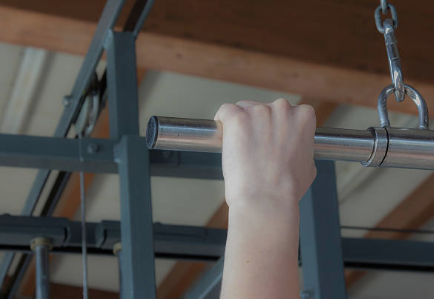
How to Perform:
- Use a pull-up bar with parallel handles (palms face each other).
- Hang in a relaxed position with arms fully extended.
- Pull your chest up toward the handles while keeping your elbows close to your torso.
- Lower slowly and repeat.
Muscles Worked:
Neutral grip hits the lats, brachialis, teres major, and rhomboids with less strain on the wrists and shoulders.
Ideal For:
Those with wrist or shoulder discomfort. A must-have in any home pull up bar back workout.
Pro Tip:
If you don’t have neutral handles, consider gymnastic rings or add-on grips to your bar.
4. Wide-Grip Pull-Up

How to Perform:
- Grip the bar wider than shoulder-width (the farther out, the harder).
- Hang in a dead hang with legs bent behind or crossed.
- Pull yourself up in a slow, controlled movement, squeezing the lats hard.
- Pause at the top, then lower slowly.
Muscles Worked:
Maximizes engagement of the outer lats, giving your back that broad “V-tapered” look.
Common Mistake:
Going too wide can reduce your range of motion. Find a grip that challenges you without limiting your pull.
5. Scapular Pull-Up
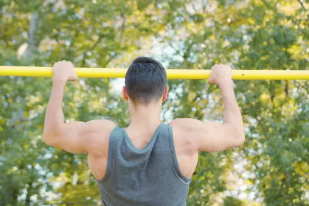
How to Perform:
- Hang with arms fully extended.
- Without bending your elbows, shrug your shoulders downward and backward (retract and depress scapula).
- Hold briefly, then return to starting position.
Muscles Worked:
Primarily works the traps, rhomboids, and stabilizer muscles around the scapula.
Why It’s Important:
Scapular pull-ups teach control at the bottom of your pull-up and help prevent shoulder injuries. They’re a game-changer for mastering the pull up bar back routine.
6. Negative Pull-Up

How to Perform:
- Use a platform or jump to the top position of a pull-up (chin above the bar).
- Slowly lower yourself for a 3–6 second count until arms are fully extended.
- Reset and repeat.
Muscles Worked:
Targets the same muscles as standard pull-ups but emphasizes eccentric strength, which is crucial for building muscle.
Why Use It:
Perfect for beginner pull up bar back workout routines. Helps you build strength before you can do full pull-ups.
7. Hanging Knee or Leg Raises

How to Perform:
- Hang from the bar with a standard grip.
- Keep your torso stable and raise your knees or legs toward your chest.
- Control the descent to avoid swinging.
Muscles Worked:
Primarily targets the core, but also strengthens grip and stabilizer muscles in the back and shoulders.
Advanced Version:
Perform straight-leg raises or L-sits for a full-body challenge that fits advanced pull up bar back exercises.
8. Pull-Up Shrug
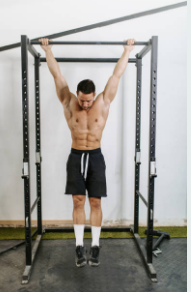
How to Perform:
- Hang from the bar with shoulder-width grip.
- Without bending your elbows, lift your shoulders up toward your ears (shrug).
- Hold briefly at the top, then lower.
Muscles Worked:
Focuses on upper traps, rhomboids, and the muscles controlling scapular movement.
When to Use:
Great warm-up or finisher for any back-focused session on a pull-up bar. Builds awareness and posture control.
9. Front Lever Progressions

How to Perform:
- Start from a tuck position while hanging from the bar.
- Try to lift your body horizontally, parallel to the ground.
- Gradually extend your legs as you build strength.
Muscles Worked:
Demands total-body strength, especially from the lats, core, and lower back.
Progression Ideas:
- Tuck lever
- Advanced tuck
- One-leg lever
- Full front lever
Why It’s Advanced:
This movement is a badge of honor in calisthenics and is ideal for progressing beyond basic pull up bar back workouts.
Sample Routine for Every Level
Beginner (Aim for 3× per week)
- Assisted Band Pull-Up – 4 × 6–10
- Negative Pull-Up – 3 × 4–6 (slow eccentrics)
- Scapular Pull-Up – 3 × 8–10
- Hanging Knee Raise – 3 × 10–12
Progression: Reduce band resistance and increase reps weekly
Intermediate (3–4× per week)
- Standard Pull-Up – 4 × 5–8
- Chin-Up – 3 × 6–10
- Wide-Grip Pull-Up – 3 × 4–6
- Hanging Leg Raise – 3 × 8–12
- Pull-Up Shrugs – 3 × 10–12
Add weight (e.g., weighted vest or belt) for sets after reaching 10+ reps.
Advanced (4× per week)
Rotate between:
Day 01:
- Weighted Pull-Up – 4 × 4–6
- Neutral-Grip Pull-Up – 3 × 6–10
- Front Lever Progressions – 3 × hold to failure
- Hanging Leg Raise – 3 × 12–15
Day 02:
- Wide-Grip Pull-Up (weighted) – 4 × 4–6
- Chin-Up – 3 × 8–12
- Pull-Up Shrug – 4 × 12–15
- Advanced L-sit Hang – 3 × hold to failure
More Articles About Back Workout
13 Best Stretches for Lower Back Pain Relief
Top Back Cable Exercises for Muscle Growth

